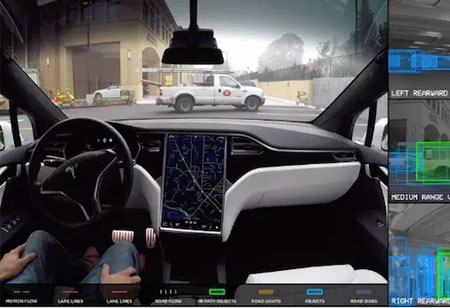Thank you for Subscribing to Construction Business Review Weekly Brief
Specials
- Apartment and Condominium Contractors Canada
- Decking Canada
- Architectural Glass Europe
- MEP APAC
- Construction Saudi Arabia
- German Apartment and Condominium Contractors
- Construction Law APAC
- Outdoor Construction
- Foundation Construction Canada
- MEP Canada
- Kitchen and Bath
- Cold Storage Construction APAC
- Precast Concrete Europe
- Construction Staffing Europe
- Pre-Construction Services
- Flooring System APAC
- Scaffolding Canada
- Swimming Pool Construction Canada
- Construction Management Canada
- Cold Storage Construction Canada
- Flooring Systems Europe
- Residential Construction
- Concrete Canada
- Construction Cladding Europe
- Construction Cladding APAC
- Concretes, Aggregates and Construction Materials APAC
- Concretes, Aggregates and Construction Materials Europe
- Commercial Contractors Europe
- Commercial Contractors APAC
- Dummy
- Construction Insulation, Coating and Waterproofing
- Construction Management APAC
- Landscaping Canada
- Construction Coating Europe
- Construction Tech Startups Europe
- Insulation Services Europe
- Mechanical Contractor Canada
- Mould Remediation and Testing Europe
- Swimming Pool Construction APAC
- Building Sealing Solutions Europe
- Construction Engineering Services
- Mechanical Electrical and Plumbing
- Roofing Systems Europe
- Architectural Glass APAC
- Startups APAC
- Construction Forensic and Owners Representative
- Flooring System
- Waterproofing APAC
- Wall Systems
- Safety and Compliance Europe
- Construction Bidding and Auctions
- Modular and Prefab Construction
- Architectural Glass
- Construction MENA
- Construction Demolition and Recycling Europe
- Modular Construction Europe
- Construction Interiors
- Steel Building APAC
- HVAC
- Doors and windows
- Construction Latam
- Building Information Modeling APAC
- Sustainable Construction APAC
- Building Restoration and Maintenance
- Commercial Contractors
- Specialty Construction
- Construction Engineering Canada
- Construction Engineering MENA
- Modular Construction Canada
- Modular Construction APAC
- Roofing and Siding Systems
- Workforce Management and Staffing
- Roofing Systems APAC
- Construction Consulting
- Steel Building Europe
- Construction Demolition and Recycling APAC
- Safety and Compliance APAC
- Concretes, Aggregates and Construction Materials
- Construction Cladding
Time for Autopilot?
Surveys show that the typical enterprise subscribes to more than 20 software as a service (SaaS) platforms. It can be said that compared with traditional centralized architecture, cloud computing has proven to save a lot of costs, but these savings

By
Construction Business Review | Thursday, February 11, 2021
Stay ahead of the industry with exclusive feature stories on the top companies, expert insights and the latest news delivered straight to your inbox. Subscribe today.
Surveys show that the typical enterprise subscribes to more than 20 software as a service (SaaS) platforms. It can be said that compared with traditional centralized architecture, cloud computing has proven to save a lot of costs, but these savings are usually achieved by consolidating infrastructure and reducing the need for expensive on-site server farms. The additional pressure of outsourcing IT operations has led to the rise of IT vendors, each of which provides different types of software designed to optimize existing and well-known processes.
FREMONT, CA: As SaaS platforms evolve, each promises more functionality in terms of automation, but with a corresponding increase in complexity and cost. However, there is some good news, as consolidation of operations across departments is now more attainable and generally a good place to start, but it’s clear that fundamental change is needed. The notion of subscribing to a plethora of disconnected platforms cannot be sustainable in the longer term, and it’s fair to say that overall IT expenditure is at an all-time high.
Much of the development emphasis of a typical SaaS solution has been to optimise the interface to keep the human operator “in the loop”. Many marketing straplines talk of making software “beautiful” and the UX designers have done wonders in their quest to simplify the user journey. Where simplicity and ease of use have been key drivers for this change to date, there is now a trend towards empowering users to become the “digital citizens” of the future. This direction of travel promises to give operators more responsibility for setup and configuration and may even facilitate the creation of some high-level administrative workflows. However, although this upskilling is an attractive prospect for many, the sophistication offered by these toolkits is unlikely to have the necessary power or capability to enable the automation of complex business processes.
As automation software becomes more intelligent, the operational demands expected of the user will change considerably. It is inevitable that the next generation of business software will almost certainly take full ownership, or have direct responsibility, for the end-to-end business process. This is already happening, so what impact will this have on user interface design, if direct human interaction is significantly reduced or even required? A good analogy is the self-driving car. If the self-driving autopilot algorithm becomes demonstrably better and safer, in comparison with a human driver, then the logical outcome would be to permanently remove the steering wheel and pedals, as they would be redundant.
Make no mistake, the demand on business process automation software is no less complex than the example given.





